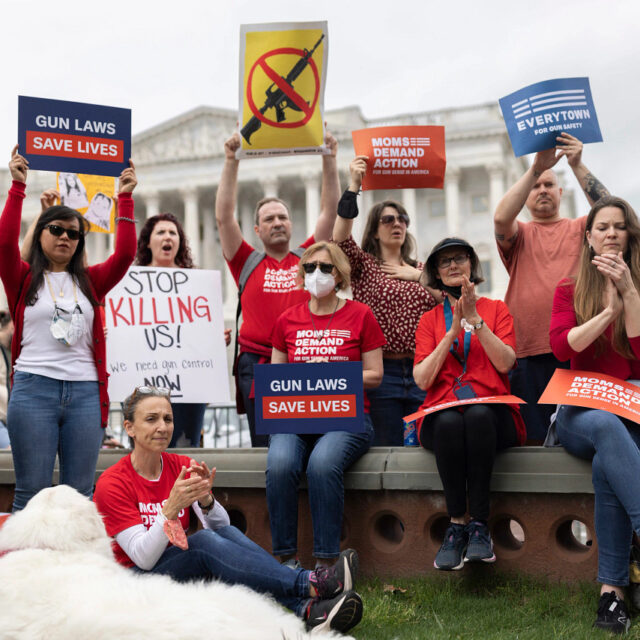What are the fact about shootings in schools?
Between April 1999 and May 2019, there were six mass school shootings1Columbine High School, Red Lake Senior High School, West Nickel Mines School, Sandy Hook Elementary School, Marjory Stoneman Douglas High School, and Santa Fe High School. and 39 attempted mass school shootings.2Defined as incidents where a person came to a school heavily armed and fired indiscriminately at numerous people. Everytown’s analysis found that in an average year, 12 children and teens (ages 0 to 19) are shot and killed and 17 are shot and wounded on K-12 school grounds. 3Everytown analysis of Gunfire on School Grounds database, number of children and teens killed and shot and wounded includes gun homicides and non-fatal assaults (excluding the shooter), unintentional discharges (including the shooter) and gun suicide deaths and attempts (including the shooter). Seven-year average: 2013-2019. That is a small proportion of the nearly 2,900 children and teens shot and killed and nearly 15,600 shot and wounded, annually.4Centers for Disease Control and Prevention, National Center for Injury Prevention and Control, Web-based Injury Statistics Query and Reporting System (WISQARS) Fatal Injury Reports and Nonfatal Injury Reports. A yearly average was developed using five years of most recent available data: 2013 to 2017. Children and teens are defined as ages 0 to 19.
- Active shooters often have a connection to the school. The majority of shooters (70 percent) were white males, and nearly all (91 percent) were current or former students at the school.5Jillian Peterson and James Densley, “School Shooters Usually Show These Signs of Distress Long before They Open Fire, Our Database Shows,” The Conversation, February 8, 2019, https://bit.ly/2vBTA3J.
- There are often warning signs. In 100 percent of targeted school violence cases there were behavioral warning signs that caused others to be concerned, and in 77 percent of incidents, other people, most often peers, were told about the shooter’s plan. 6Threat Assessment Center, “Protecting America’s Schools: A US Secret Service Analysis of Targeted School Violence” (US Secret Service, Department of Homeland Security, 2019), https://bit.ly/2U7vnwa.
- Most shooters obtain their guns from family or friends. 73 percent to 80 percent of school shooters under the age of 18 obtained their guns from home, their relative’s home or from friends.7National Threat Assessment Center, “Protecting America’s Schools.” John Woodrow Cox and Steven Rich, “‘The Gun’s Not in the Closet,’” Washington Post, August 1, 2018, https://wapo.st/2TyDnTW; Centers for Disease Control and Prevention, National Center for Injury Prevention and Control, Division of Violence Prevention, “Source of Firearms Used by Students in School-Associated Violent Deaths, United States, 1992-1999,” MMWR Weekly 52, no. 9 (March 7, 2003): 169–72, https://bit.ly/2RGthlo.
What can the 116th Congress do to make schools safer?
Require background checks on all gun sales so people exhibiting warning signs, minors, and people with dangerous histories can’t evade our gun laws.
Support H.R. 8 and S. 42.
Support extreme risk laws,817 states (CA, CO, CT, DE, FL, HI, IL, IN, MA, MD, NV, NJ, NY, OR, RI, VT, WA) and the District of Columbia have passed red flag laws. sometimes known as red flag laws, that empower family members and law enforcement to get a court order to temporarily prevent access to firearms by students or others who are shown to be a threat to themselves, others or schools.
Support H.R. 1236 and S. 506.
Encourage awareness of secure firearm storage to address the primary source of guns used in school shootings.
Fund a grant program to support schools sending home information about secure storage.
Raise the age to purchase semiautomatic firearms to 21.
Support H.R. 717 and S. 1395.
Fund evidence-based threat assessment programs that empower a school-based multidisciplinary team to assess the risk and appropriately intervene without overly relying on discipline or the criminal justice system but through expanding access to mental health services in schools.
Appropriate funding for BJA’s STOP School Violence grant program and support H.R. 3714/S.495 to reauthorize and expand the work of the National Threat Assessment Center.
Fund physical security upgrades to prevent access to schools and classrooms through access control and internal door locks.
Appropriate funding for COPS’s School Violence Prevention Program.
Encourage schools responsibly planning in advance so staff can immediately lock out schools and law enforcement can respond quickly, including taking a trauma-informed approach to drills.9US Department of Education, Office of Elementary and Secondary Education, Office of Safe and Healthy Students, “Guide for Developing High-Quality School Emergency Operations Plans,” 2013, https://bit.ly/2Gnz764.
Establish an Advisory Council to recommend best practices for active shooter drills.
Do not permit federal grants or programs to be used to fund arming teachers or staff.
Clarify that no federal funds (including ESSA) can be used to arm or train teachers or staff.


